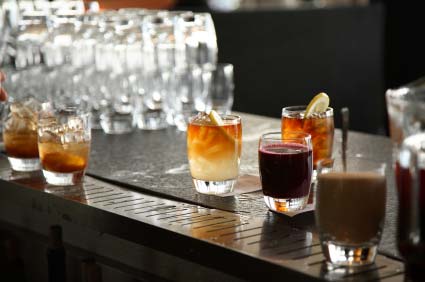Texans who enjoy cracking open a can of Lone Star beer or sampling the latest craft brews are not alone. For more than 160 years, Texans have supported the state’s vibrant beer industry. Today, we are in the middle of a microbrewing renaissance that began more than 20 years ago. It all started in 1978 when former President Carter paved the way by allowing home brewers to partake in the craft without a Texas beer license. This decision has helped the industry come full circle going from local breweries to corporate conglomerates and back to microbrewing.
Although craft brewing seems like a new idea, it is how the beer industry began in Texas and many other states. During the 19th century, British immigrants made stouts, porters and ales with recipes from their native country. These ales could be brewed and enjoyed almost immediately without aging. By the 1860s, German immigrants transformed the beer culture and helped shape the industry that we know today.
Small German breweries sprang up in San Antonio, Brenham, New Braunfels and immigrant enclaves across the state, but German beers were more difficult to produce. Unlike the top-fermenting British ales, Germans preferred lagers that fermented for months in cool temperatures. For these reasons, German lagers were brewed in the winter and were stored deep underground. At William Menger’s Western Brewery in San Antonio’s Alamo Square, barrels were aged in a cellar protected by stone walls that were 3 feet thick.
During the mid-1800s, there were roughly 20 small brewers in the state, and 77 people worked in the industry. Steam engines and advances of the Industrial Revolution increased overall production but decreased the number of breweries. Some of the larger institutions, such as Menger’s, produced 1,500 barrels of beer annually. The smallest brewery sold 49 barrels a year.
By the 1870s, the industry reached an all-time high. Some 58 companies held a Houston beer license, and these brewers produced 16,000 barrels collectively. However, the industry experienced a rapid decline. Strong competition, poor products and financial issues caused smaller breweries to shut their doors. As mass production increased, beer barons needed more capital to invest in machinery that would increase production from thousands of barrels to millions.
Adolphus Busch was one businessman who embraced the new business model. He raised $400,000 to build the cutting-edge Lone Star Brewery in San Antonio. Pearl Beer was another company that used technology to produce 110,000 barrels annually. As these large corporations took over the industry, Prohibition became the new threat. Some breweries rebranded themselves, and other companies produced soft drinks and “near beer” to survive. After this era, national firms like Miller invaded the market.
Throughout most of the 20th century, per capita beer consumption increased steadily. Conglomerates bought up the few successful brands, and small brewers struggled to keep their businesses alive. The Spoetzl Brewery, which produces Shiner beer, embodies the struggle of these underdogs. When vertically integrated beer makers, bottlers and distributors ruled the market in the 1980s, Spoetzl’s production was cut in half. The company changed hands and gradually achieved success under the leadership of Carlos Alvarez. Between 1990 and 1994, the company’s production went from 36,000 barrels to 100,000 barrels. Eventually, mega-corporations like Miller and Budweiser became a victim of their own success. Now, the beer industry has gone back to its roots thanks to consumers who embrace craft brews and microbrew brands.
In 2008, Houston had just one craft beer maker, which is defined as a brewery that produces less than 75,000 barrels per year. Today, many more independent companies are requesting a Houston alcoholic beverage license to cater to consumers who seek out original craft beers and brewpubs that offer a singular product and experience.

